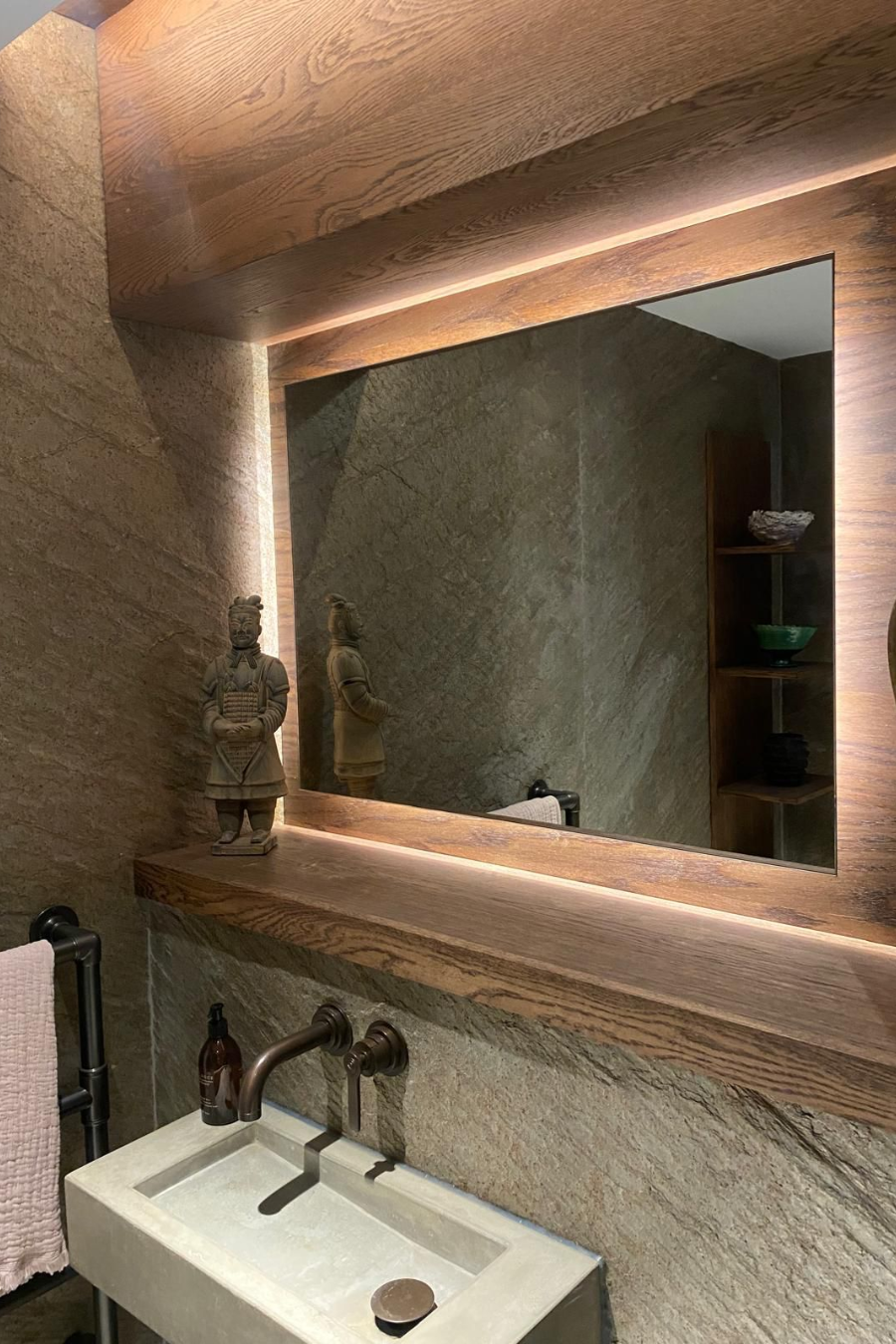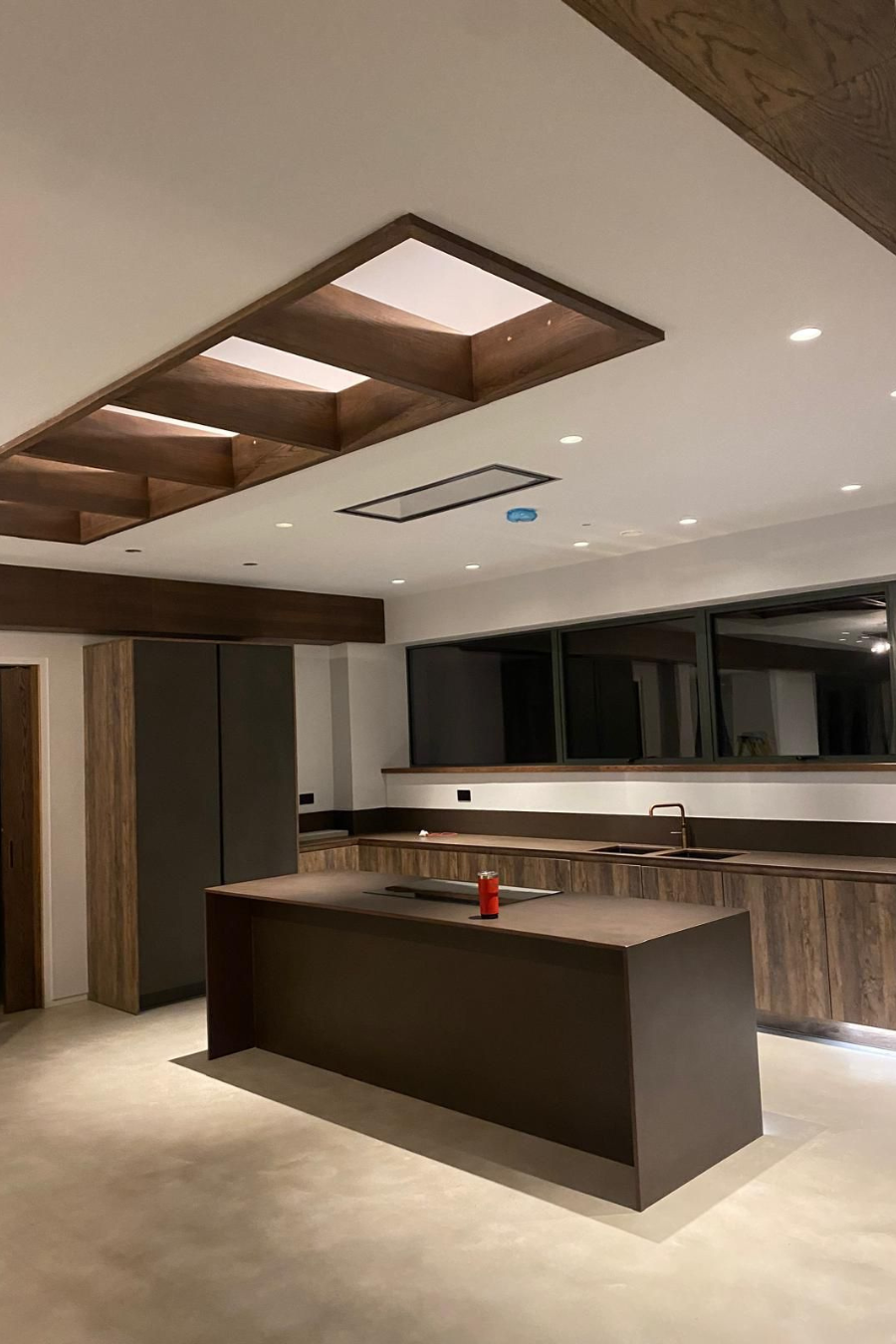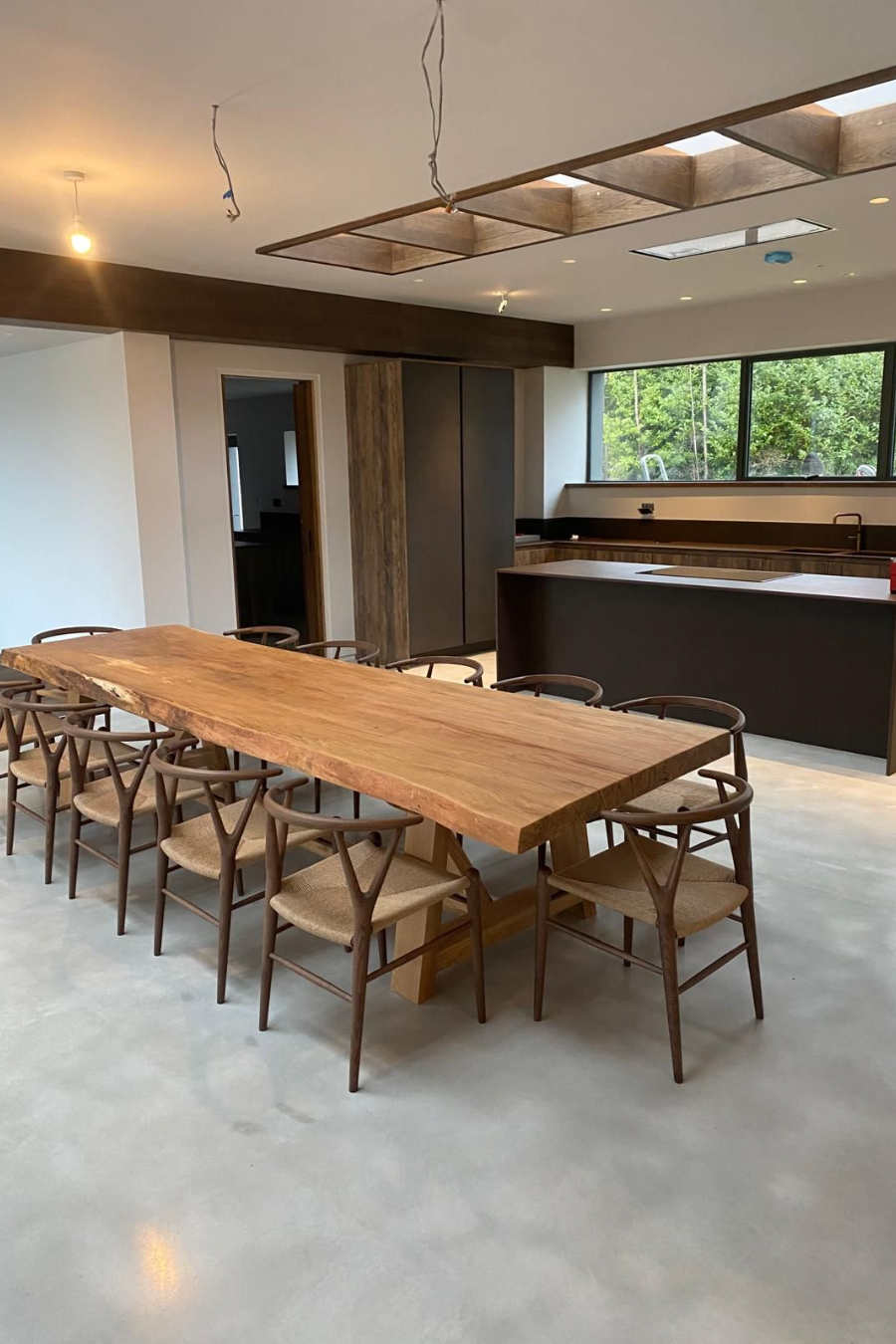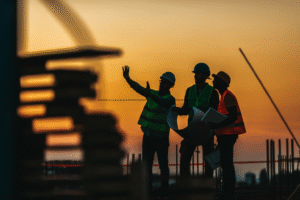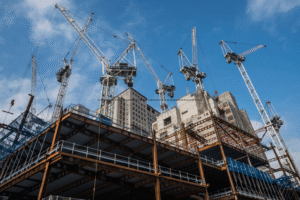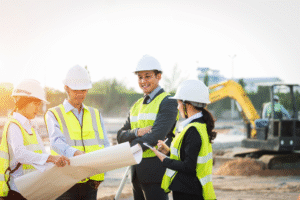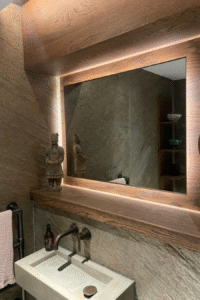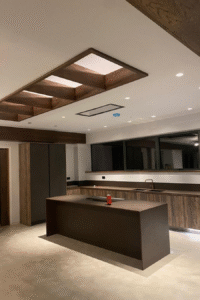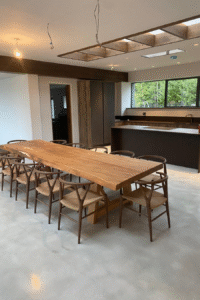Eco-friendly construction in Wakefield reduces environmental impact and enhances occupant quality of life. Its key benefits are lower carbon emissions, energy conservation, improved indoor air quality, higher property values, and local economic support.
How Does Eco-Friendly Construction Reduce Wakefield’s Carbon Footprint?
This method uses sustainable materials and low-emission processes. Renewable energy sources like solar panels and wind energy lower fossil fuel dependency, while recycled and locally sourced materials reduce energy used in transport and production. For instance, timber from sustainable forests releases far less carbon than steel or concrete. Such practices can lower carbon emissions by up to 30% compared to conventional builds, positioning Wakefield as a model of low-carbon development that improves air quality and community health.
In What Ways Can Sustainable Buildings Lower Energy Bills in Wakefield?
Energy-efficient technologies and high-performance insulation cut energy bills. Passive house design minimizes heat loss in winter and keeps interiors cool in summer, lowering the need for heating and air conditioning. Heat pump systems, energy-efficient windows, and doors, along with solar panels providing renewable energy, help reduce monthly utility costs by up to 40%. Lower energy bills support long-term market stability and encourage further investment in green infrastructure.
How Does Eco-Friendly Construction Improve Indoor Air Quality?
By using non-toxic materials and advanced ventilation systems, sustainable buildings create healthier indoor environments. Avoiding volatile organic compounds (VOCs) and incorporating green roofs and natural air filtration systems helps reduce allergens and pollutants. Improved air quality leads to fewer respiratory issues, increased productivity, and lower healthcare costs. In a region with strict environmental regulations like Wakefield, these practices exceed standards and provide a competitive advantage.
Why Do Sustainable Buildings Increase Property Value in Wakefield?
Properties built with green technologies enjoy lower operating costs and enhanced durability, making them attractive to eco-conscious buyers. Energy-efficient features can boost resale values by up to 10% compared to traditional homes. As government incentives for green building grow, these sustainable properties also offer long-term savings and an appreciating asset, reflecting both market demand and regulatory support.
How Does Eco-Friendly Construction Support Wakefield’s Local Community and Economy?
Green construction creates local job opportunities and encourages the use of nearby materials, ensuring that economic benefits remain within the community. It fosters workforce development in the green energy sector and supports local businesses by reducing supply chain emissions. Eco-friendly building projects often incorporate community spaces and sustainable landscaping, which strengthen the local economic network while promoting environmental conservation and resource efficiency.
Which Sustainable Materials Are Best Suited for Construction in Wakefield?
Sustainable materials are the backbone of eco-friendly construction in Wakefield. They offer durability, energy efficiency, and reduced environmental impact. The following sections describe the advantages of different sustainable materials used in the region.
What Are the Advantages of Using Timber in Wakefield Construction?
Timber is renewable and requires less energy for production than steel or concrete, resulting in lower carbon emissions. Sourced from certified sustainable forests, timber minimizes deforestation and offers natural insulation to maintain indoor temperatures. Its versatility suits both traditional and modern designs, and treatments improve its durability against pests and fire. Timber is recyclable and biodegradable, aligning perfectly with eco-friendly goals.
How Do Recycled Materials Contribute to Sustainable Building in Wakefield?
Using recycled steel, glass, and plastic reduces the need for new resources and lessens construction waste. These materials often require less energy to process than raw inputs, offering both energy conservation and waste reduction. Recycled aggregates in concrete can enhance thermal performance and further lower carbon emissions. This practice supports the circular economy, keeping waste out of landfills while meeting local sustainability regulations.
What Eco-Friendly Insulation Options Are Available for Wakefield Homes?
Homeowners can choose from recycled denim, sheep’s wool, cellulose, and hemp insulation. These options provide excellent thermal performance and reduce reliance on petrochemical products. For example, cellulose insulation made from recycled paper is sustainable and cost-effective, lowering energy consumption while also enhancing indoor air quality by reducing chemical off-gassing.
Why Is Local Sourcing of Materials Important for Wakefield’s Sustainability?
Obtaining construction materials locally cuts down on transportation emissions and supports the regional economy. Local materials are typically better suited to the regional climate, improving building performance and durability. This practice saves costs, ensures higher quality standards, and reinforces the local ecosystem and social fabric, which benefits both the environment and Wakefield’s economic health.
What Energy-Efficient Technologies Are Driving Sustainable Construction in Wakefield?
Energy-efficient technologies are essential for modern sustainable construction in Wakefield. Not only do they conserve energy and lower operating costs, but they also reduce environmental impact. Key innovations include solar panels, heat pump systems, and passive house designs.
How Do Solar Panels Help Wakefield Homes Become More Energy Efficient?
Solar panels convert sunlight into electricity, reducing the need for non-renewable energy. Their installation on homes and commercial buildings cuts utility bills and lowers the carbon footprint. Improved efficiency and battery storage systems ensure reliable energy supply even during low sunlight, while government incentives help offset the initial cost.
What Are the Benefits of Heat Pump Systems in Wakefield Buildings?
Heat pump systems extract warmth from the air, ground, or water to provide efficient heating and cooling. They can reduce energy costs by up to 50% compared to traditional HVAC systems. Effective in various climates, these systems lower greenhouse gas emissions and support long-term resource efficiency through versatile operation in both heating and cooling modes.
How Does Passive House Design Improve Energy Efficiency in Wakefield?
Passive house standards focus on superior insulation, airtight construction, and strategic window placement to optimize natural light and heat retention. This design drastically cuts energy required for heating and cooling—up to 90% less than conventional buildings. The resulting lower energy demand reduces utility bills and environmental impact while ensuring occupant comfort.
Which Energy-Efficient Windows and Doors Are Recommended for Wakefield?
Double or triple-glazed windows with low-emissivity coatings and insulated doors with advanced sealing help maintain thermal performance by reducing heat loss. These products not only lower energy bills but also minimize noise pollution and improve indoor air quality by blocking external pollutants. They are key to achieving cost-effective and sustainable living spaces.
What Eco-Friendly Construction Methods Are Most Effective in Wakefield?
Innovative construction methods are crucial for reducing waste, conserving energy, and ensuring building durability. Techniques such as timber frame construction, modular building, green roofs, and water conservation systems enable high-quality, sustainable structures.
Why Is Timber Frame Construction Popular for Sustainable Building in Wakefield?
Timber frame construction is favored for its sustainability and thermal performance. Using timber—a renewable resource with low embodied energy—builders achieve faster construction times and lower environmental impact. Its natural insulating properties and adaptability to various design styles make timber frames ideal for integrating traditional craftsmanship with modern eco-friendly techniques.
How Does Modular Construction Reduce Waste and Build Time in Wakefield?
Modular construction involves prefabricated building components produced off-site under controlled conditions. This method reduces material excess and onsite errors, leading to shorter construction schedules and lower labour and financial costs. The precision of factory production minimizes waste and allows for flexible, adaptable designs that can evolve with future needs.
What Are the Environmental Benefits of Green Roofs in Wakefield?
Green roofs improve insulation, manage stormwater, and enhance urban biodiversity. They reduce the demand on heating and cooling systems by providing natural insulation and absorb rainwater to lessen drainage pressure and flood risk. Additionally, green roofs capture pollutants and release oxygen, contributing both to improved air quality and a more attractive urban landscape.
How Are Water Conservation Systems Integrated Into Wakefield’s Eco-Friendly Buildings?
Techniques like rainwater harvesting, greywater recycling, and low-flow fixtures are used to minimize water waste. Rainwater harvesting stores runoff for irrigation or non-potable uses, and greywater recycling treats wastewater for reuse. Combined with water-efficient plumbing, these systems lower consumption, reduce utility costs, and demonstrate a holistic approach to sustainable resource management.
What Building Regulations and Incentives Support Eco-Friendly Construction in Wakefield?
Wakefield’s eco-friendly construction is supported by stringent local building regulations and attractive incentives. Wakefield Council enforces strict codes on energy efficiency, waste reduction, and the use of environmentally responsible materials. Government grants, tax breaks, and low-interest financing further encourage the adoption of sustainable practices by reducing financial barriers and stimulating innovation across the region.
What Are Wakefield Council’s Building Codes for Sustainable Construction?
The building codes focus on energy efficiency, thermal comfort, and low-impact materials. Regulations include strict insulation standards, mandatory use of renewable energy sources, water-saving technologies, and limits on construction waste. Adherence to these codes ensures that new developments contribute to reducing the built environment’s overall carbon footprint while enhancing occupant health and comfort.
Which Government Grants and Tax Breaks Encourage Green Building in Wakefield?
Financial support programs in Wakefield offer reduced interest loans, tax credits, and direct subsidies for projects that meet environmental standards. These incentives lower the upfront costs of integrating renewable energy systems, energy-efficient insulation, and water conservation technologies, thereby making eco-friendly construction more accessible and economically viable for a wide range of stakeholders.
How Do Local Initiatives Promote Eco-Friendly Construction Practices?
Community workshops, sustainability awards, and collaborative projects help raise public awareness and share best practices. Local partnerships provide technical expertise and training, empowering homeowners and contractors to implement green building measures. Recognising successful projects through awards further encourages widespread adoption of eco-friendly construction practices and reinforces a culture of continuous environmental improvement.
What Successful Eco-Friendly Construction Projects Showcase Wakefield’s Sustainable Future?
Showcase projects in Wakefield provide tangible examples of sustainable building practices. Successful residential and commercial projects demonstrate how innovative design and green technologies can produce energy-efficient, economically viable structures with significant environmental benefits. These projects set benchmarks for quality and sustainability, offering lessons that inspire future developments in the region.
What Features Made the Eco-Friendly Home Project in Wakefield a Success?
This home integrated sustainable materials, energy-efficient systems, and advanced water conservation methods. Key features included timber frame construction, solar panels for renewable energy, high-performance insulation, and a green roof that managed stormwater and enhanced thermal performance. The effective use of recycled and locally sourced materials, combined with design strategies to maximize natural light and ventilation, resulted in outstanding energy savings and overall performance.
How Did the Commercial Building Retrofit Improve Energy Efficiency in Wakefield?
A notable retrofit upgraded heating, ventilation, and air conditioning systems, installed energy-efficient windows, and incorporated solar panels. An advanced automation system optimised energy usage in real time, reducing overall consumption by over 35%. The project not only lowered operational costs but also enhanced occupant comfort, demonstrating that existing structures can be transformed into sustainable buildings without complete reconstruction.
What Lessons Can Be Learned From Wakefield’s Green Building Projects?
Key lessons include the importance of integrating sustainable materials and energy-efficient technologies, as well as leveraging financial incentives to offset initial costs. These projects illustrate that green construction delivers long-term economic savings and improved quality of life. Effective use of local resources, careful planning, and adherence to strict codes are crucial for success and provide a roadmap for future sustainable development in Wakefield.
What Is the Future of Eco-Friendly Construction in Wakefield?
The future of sustainable construction in Wakefield lies in adopting smart technologies, innovative building techniques, and an even stronger focus on sustainability. As demand for green buildings grows and environmental regulations tighten, the industry is set to evolve rapidly with increased automation, enhanced energy monitoring, and new materials that further reduce environmental impact while maximising occupant comfort.
How Will Smart Home Technologies Enhance Sustainable Living in Wakefield?
Smart home systems offer precise energy management through sensors, automated controls, and real-time data analytics. Technologies such as smart thermostats and intelligent lighting adjust energy use based on occupancy and weather, reducing waste and lowering costs. As these systems become more widespread, they will help residents actively manage and reduce energy consumption.
What Role Will 3D Printing Play in Wakefield’s Sustainable Construction?
3D printing enables rapid prototyping and on-demand production of customised building components with minimal waste. This technology reduces the need for traditional, resource-intensive processes and supports the use of recycled and locally sourced materials. As 3D printing matures, it is expected to shorten construction times, lower costs, and allow innovative, environmentally sensitive designs.
Which Sustainable Design Trends Are Shaping Wakefield’s Building Industry?
Trends such as biophilic design, net-zero energy buildings, and adaptive reuse are gaining momentum. Biophilic design integrates natural elements to improve mental health and indoor air quality. Net-zero energy buildings strive to produce as much energy as they use, while adaptive reuse transforms existing buildings to reduce material waste and preserve cultural heritage. These trends reflect a holistic approach that balances environmental integrity, occupant well-being, and economic value.
Final Thoughts
Eco-friendly construction in Wakefield is paving the way for a sustainable future by reducing carbon emissions, lowering energy bills, and improving indoor air quality. The combined integration of renewable energy, sustainable materials, and innovative design drives both environmental and economic benefits, enhancing property values and community vibrancy. As technology and regulations evolve, embracing green practices will continue to strengthen Wakefield’s commitment to environmental stewardship and long-term community development.
Frequently Asked Questions
Q: How does eco-friendly construction help reduce Wakefield’s carbon footprint? A: It uses sustainable materials, renewable energy systems, and energy-efficient design practices that lower emissions from production, transportation, and operations, aligning with global trends for reducing greenhouse gases.
Q: What sustainable materials are most recommended for construction in Wakefield? A: Materials such as certified timber, recycled steel and glass, and eco-friendly insulation like sheep’s wool and cellulose offer reduced energy consumption, lower environmental impact, and enhanced performance.
Q: What government incentives are available to promote green building in Wakefield? A: Wakefield offers grants, tax credits, and low-interest financing to support energy-efficient systems, renewable installations, and the use of sustainable materials, easing the initial cost burden.
Q: How do energy-efficient technologies like solar panels and heat pumps contribute to sustainable construction? A: Solar panels generate clean electricity from sunlight, while heat pumps transfer ambient heat efficiently. Both technologies reduce reliance on non-renewable energy, lower utility bills, and decrease emissions.
Q: What role do local initiatives play in promoting eco-friendly construction practices in Wakefield? A: Local programs such as community workshops, sustainability awards, and collaborative projects share best practices, support local resources, and foster a culture of environmental stewardship.
Q: How will smart home technologies shape the future of sustainable living in Wakefield? A: They enable precise energy management through automation of lighting, temperature, and water usage, helping homeowners monitor and reduce energy waste effectively.
Q: Can adaptive reuse contribute to Wakefield’s sustainability goals? A: Yes, by revitalising existing buildings instead of new construction, adaptive reuse reduces material waste and preserves cultural heritage while incorporating modern energy-efficient technologies.
| Material/Technology | Key Benefit | Environmental Impact Reduction | Typical Application in Wakefield |
|---|---|---|---|
| Timber | Renewable, low embodied energy | Low carbon footprint | Residential, commercial structures |
| Recycled Materials | Reduces waste, conserves resources | Minimises construction waste | Structural components, insulation |
| Solar Panels | Generates renewable energy | Cuts fossil fuel dependence | Rooftop installations, off-grid energy |
| Heat Pumps | Efficient heating & cooling | Lowers operational costs | HVAC systems in homes and offices |
| Green Roofs | Enhances insulation and stormwater management | Improves building efficiency | Urban residential and commercial use |
Before implementing eco-friendly construction methods, stakeholders should review the table above, which summarises the key sustainable materials and technologies along with their environmental benefits. This approach is vital for reducing Wakefield’s ecological footprint and contributes to long-term energy savings and a higher quality of life.


